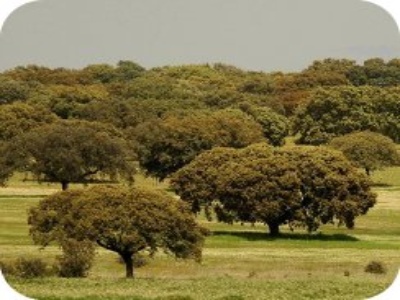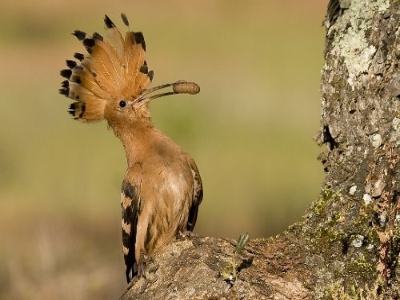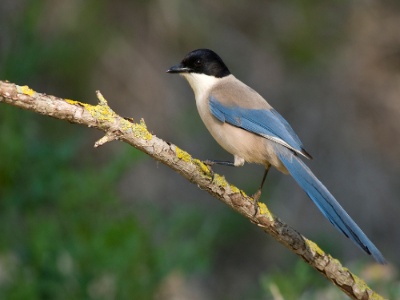Grazing lands
Press
las Grazing lands
Recommended Seasons: SPRING, AUTUMN AND WINTER
The grazing lands or dehesas are, without doubt, the most characteristic landscape in Extremadura, occupying 35% of the total area of the region. The dehesas are the result of the progressive clearing of the Mediterranean Forest, the reduction in the number of trees and the increase in the number of bushes and shrubs. At the same time, through periodic pruning of the trees and the clearing of shrubbery, mankind has managed to create a complex eco-system which is an unmistakable symbol of sustainable development in the region. The dehesas are composed mainly of evergreen oaks (holm and cork), whilst in the upper reaches there are dehesas made up of deciduous oaks.
In the denser dehesas with between 20 and 40 trees per hectare, the bird species are typical of the forest, including hoopoe, woodpigeon, turtle dove, green woodpecker, blue tit, great tit, chaffinch, blackbird, mistle thrush, spotted flycatcher , the western orphean warbler, woodchat shrike, azure-winged magpie, the rock sparrow, the Spanish sparrow and the greenfinch during the breeding season.
Where the dehesa retains shrubs such as the rock rose, lavender or even young evergreen oak which have not been pruned, it's enriched by the presence of other species such as woodlark; blackcap, subalpine warbler and Dartford warbler.
When tree density reduces to fewer than 15 per hectare with a predominance of pastures with occasional shrubs, other species appear such as Thekla lark, stonechat, and even the stone curlew.
In winter, one of the most typical species is the common crane, truly symbolic of the dehesas at this time of year. Similarly, the stock dove, also attracted by the abundance of acorns, arrives in large numbers. Other frequent visitors in winter are northern lapwing, white wagtail, robin, black redstart, song thrush, redwing, chaffinch and linnet.
The dehesas are also the nesting habitat for various birds of prey such as black-winged kite, black kite, common buzzard, booted eagle, or short-toed eagle whilst others arrive in search of food such as the Spanish imperial eagle, bonelli's eagle or for carrion such as griffon vulture, black vulture or Egyptian vulture.
The SPA's most typical of this habitat are 'Embalse de Cornalvo (Cornalvo Reservoir) and Sierra Bermeja (Bermeja Range)', 'Dehesas de Jerez (Jerez dehesas)', 'Vegas del Ruecas (Ruecas Meadows), Cubilar and Moheda Alta (High Moheda)', 'Monfragüe and the surrounding dehesas', 'Puerto Peña and Sierra de los Golondrinos (Golondrinos Range)', 'Sierra de la Moraleja (Moraleja Range) and Piedra Santa' and 'Sierra de Siruela (Siruela Range)' and 'Sierra de Hornachos (Hornachos Range)'.



